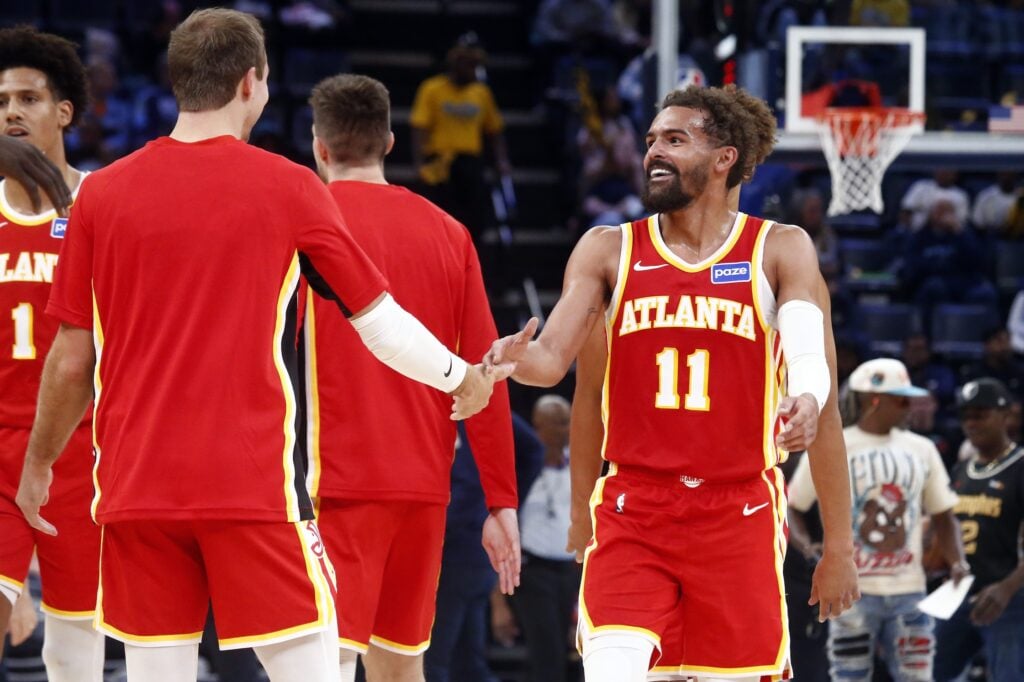Are the Hawks better without Trae Young? The question surfaces after short win streaks or a hot shooting night; however, context and sample size still matter. In practice, Atlanta’s offense, spacing, and ceiling rise when its best creator plays. His pull-up gravity stretches coverage, his pick-and-roll reads generate efficient shots, and his late-clock playmaking prevents empty trips.
Are The Hawks Better Without Trae Young? Why The Answer Is No
With Young on the floor, defenders extend to 28–32 feet, which opens clean dives and rhythm threes. Moreover, wings attack tilted help instead of set shells. By contrast, Hawks without Trae Young see tags arrive early, corners close faster, and drives meet more bodies, so possessions grind.
Decision-making widens the gap as well. Young manipulates drop, switch, and hedge in real time, then hits the weak side on time and on target. Consequently, those choices become secondary assists, free throws, and put-backs against rotating defenses. Without that engine, the offense leans on isolation and late-clock heaves, an approach that rarely sustains. Thus, the narrative that the Hawks without Trae Young improve over long stretches doesn’t hold up.
Defense is part of the story, yet it doesn’t flip the verdict. Bigger lineups may switch more and allow fewer straight-line drives; nevertheless, the offensive trade-off is costly. Fewer efficient looks mean fewer set defenses, which, in turn, fuel opponent transition. Therefore, scoring first, something Young drives consistently, helps the scheme more than marginal gains without him. In short, the Hawks without Trae Young lose the best tool for controlling tempo.
TRAE YOUNG GAME-WINNER FROM HALF-COURT


WHAT AN ENDING IN UTAH
pic.twitter.com/AbVyAzmvxA
— SportsCenter (@SportsCenter) January 8, 2025
How to maximize Young—and the roster
The build is straightforward, and it scales. First, add shooting and size on the wing, six-foot-six to six-foot-nine players who cut on time, fire without hesitation, and guard up a spot. Their length covers cross-matches while their spacing keeps the nail clear for guard-big actions. Second, pair Young with a mobile, vertical five who screens with force, re-screens, and finishes above the rim; additionally, a touch of pick-and-pop range multiplies options. Third, use a defensive connector at guard who navigates screens, sets them for others, and punishes ignores with catch-and-shoots. Built this way, the answer to “Are the Hawks better without Trae Young?” becomes a clear no, because the cast is designed to amplify him.

Furthermore, that ecosystem stabilizes both ends. Early-clock threes appear, rim pressure stays constant, and late-game shotmaking survives when sets break down. Meanwhile, added length reduces scramble rotations and the spray threes that follow. As results stack up over months, the claim that the Hawks without Trae Young reach a higher ceiling fades. Consistent spacing, cleaner matchups, and defined roles also improve turnovers, foul discipline, and rebounding, turning close losses into wins. Over time, edge confirms it: Hawks without Trae Young don’t climb higher.
Ultimately, the film and logic align. Atlanta gains more by optimizing its star than by imagining life without him. Therefore, keep the engine, then surround it with shooting size, a vertical five, and a guard who connects actions. Are the Hawks better without Trae Young? No, and with the right support, they won’t need to ask again.
Featured Image: Kamil Krzaczynski-imagn images
The post Are The Hawks Better Without Trae Young? Why The Answer Is No appeared first on Last Word On Basketball.
